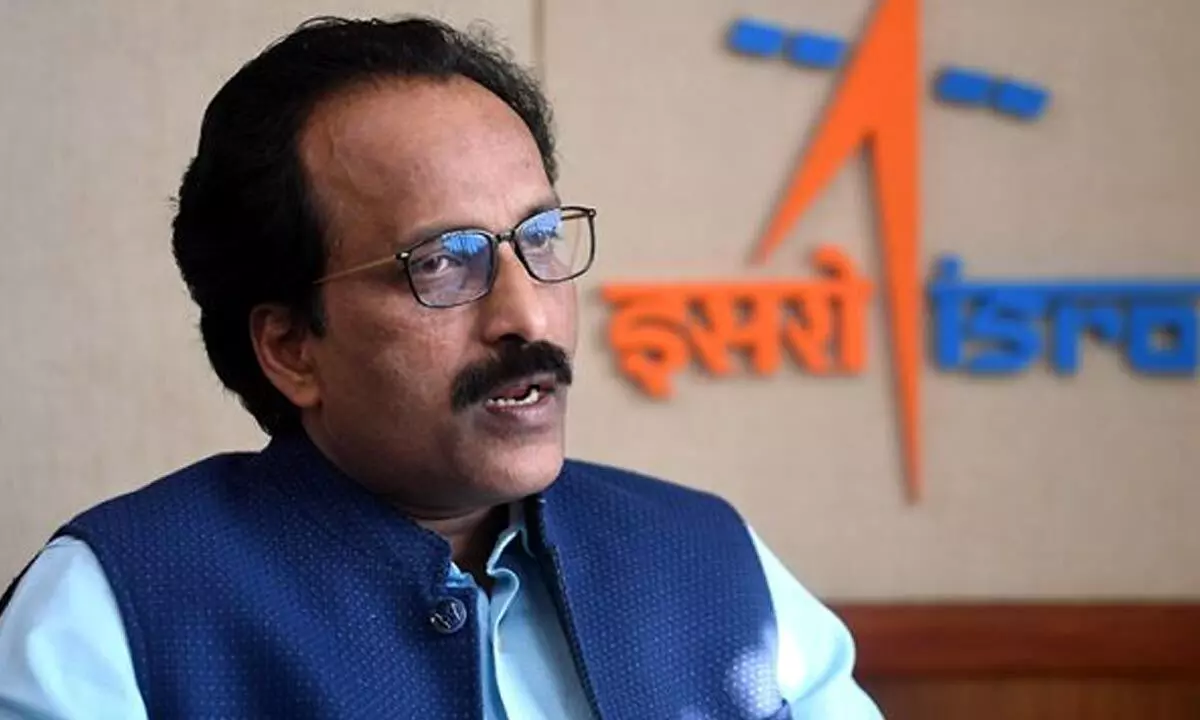Live
- Telangana CM Revanth Reddy Announces Major Benefits for Farmers in the New Year
- Hyderabad will Become a Global Business Hub: CM Revanth Reddy
- NFR issues notice to 20 GCPA leaders for disrupting railway services
- Bengal school job case: CBI submits third supplementary charge sheet
- Opelka beats Mpetshi Perricard in Brisbane, reaches first final since 2022
- RJD to convene national executive meet in Patna on Jan 18
- ‘Temple’ shirt row continues in Kerala
- Rajnath Singh to present 'chadar' at Ajmer Sharif Dargah on Jan 5
- No Entry to Collectorate Without a Helmet - Collector Badavath Santosh
- Every Pregnant Woman Deserves Safe Motherhood -DMHO Dr. K.V. Swarajyalakshmi
Just In
Space Traffic Delays ISRO’s SpaDeX Mission: New Launch Time Announced


ISRO chairman S Somanath (File/Photo)
ISRO delays the SpaDeX mission to 10:00 PM on December 30 due to orbital congestion. Learn about the impact of space traffic on India’s ambitious space missions.
The Indian Space Research Organisation (ISRO) has rescheduled the launch of the Polar Satellite Launch Vehicle (PSLV-C60) carrying the Space Docking Experiment (SpaDeX) due to orbital congestion. Originally set for 9:58 PM on Monday, the launch has been postponed to 10:00 PM to avoid potential conflicts with other satellites sharing the orbit.
ISRO Chairman Dr. S Somanath confirmed that the delay was caused by "conjunctions with other satellites in the same orbit," including some from SpaceX’s Starlink constellation. This incident underscores the increasing challenges of navigating crowded low Earth orbits, where approximately 7,000 Starlink satellites currently operate. The total Starlink constellation is expected to expand to 12,000 satellites, raising concerns about orbital traffic and debris among global space agencies.
The postponement of the SpaDeX mission is not an isolated incident. Similar delays occurred during the Chandrayaan-3 mission in 2023 due to comparable space traffic issues. With the rapid proliferation of satellite constellations and growing volumes of space debris, the risks of collision and interference in orbit are escalating. Space agencies worldwide, including ISRO, are grappling with these challenges to ensure mission safety and success.
The SpaDeX mission marks a significant milestone in India’s space exploration efforts. The PSLV-C60 mission introduces several firsts, including integration and testing of the rocket and satellites by private firm Ananth Technologies. Assembly of the PSLV occurred in a newly established facility at the Satish Dhawan Space Center in Sriharikota.
SpaDeX aims to achieve in-orbit docking and undocking of two satellites, a complex operation that positions India alongside spacefaring nations like Russia, the United States, and China. The mission employs indigenous technology and is critical for future projects, including Chandrayaan-4 and India’s proposed space station, the Bharatiya Antariksha Station.
The PSLV’s fourth stage, typically discarded as space debris, has been repurposed as an orbital laboratory called the PS4-Orbital Experiment Module (POEM). This module will conduct 24 experiments, including biological tests such as growing cowpea seeds, robotic demonstrations, and green rocket fuel trials. For the first time, India will perform live biology experiments in space, showcasing its advancements in space technology.
Docking technology involves connecting two space objects, often using mechanisms like soft or hard interfaces or pressurized compartments. This capability is essential for human spaceflight programs, lunar sample return missions, and the establishment of space stations. Dr. Somanath described the docking process as critical for future ambitions, including crewed missions and advanced space operations.
The SpaDeX mission will demonstrate the use of a “target” satellite and a “chaser” satellite, where the chaser aligns with the target to establish a secure connection. Success in this mission would place India in an elite group of nations capable of executing complex space docking maneuvers.
“This mission’s success will elevate India’s position as a major spacefaring nation, capable of not just launching satellites but also conducting sophisticated space operations,” Dr. Somanath said. The SpaDeX mission is expected to pave the way for India’s advanced space exploration goals.
- ISRO SpaDeX launch news
- Traffic jam in space
- SpaDeX launch postponed update
- ISRO space missions 2024
- ISRO SpaDeX launch delay
- Space traffic jam delays SpaDeX
- ISRO mission rescheduled 10 pm
- SpaDeX launch time update
- ISRO SpaDeX traffic in orbit
- Space debris impacts ISRO launches
- SpaDeX launch postponed December 2024
- ISRO delays launch due to space traffic
- Indian space mission SpaDeX update
- ISRO reschedules SpaDeX launch details

© 2024 Hyderabad Media House Limited/The Hans India. All rights reserved. Powered by hocalwire.com






